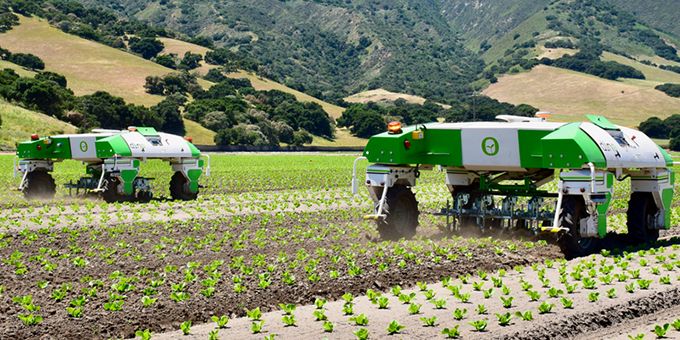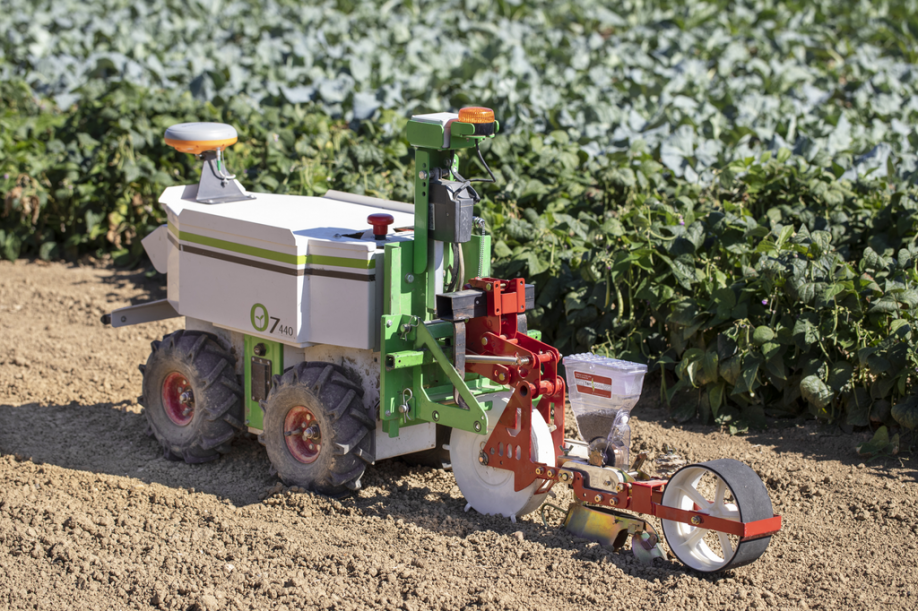After 10 years’ existence, Naïo Technologies is consolidating its status as the agricultural robotics leader by being the first company in the world to certify that its large scale agricultural robots will be operating unsupervised in fields from the spring of 2022!
 Naïo Technologies Unsupervised Work of its Full Range of Robots
Naïo Technologies Unsupervised Work of its Full Range of Robots

Article from | Naïo Technologies
After having certified the little farming assistant Oz in 2015, it’s now the turn of Dino, dedicated to weed in large-scale vegetable fields, and Ted, dedicated to the viticulture sector, to be capable of working in complete autonomy without any human supervision.
What does autonomy mean for an agricultural robot?
“Real autonomy, as requested by our clients, means being able to leave the robot to work alone in a field in order to get on with tasks with a higher added value”, explains Matthias Carrière, Manager of the Sales and Clients pole. “The challenge lies in delegating a simple, repetitive task to your robot, just in the same way you would leave a robot vacuum cleaner or a robot lawnmower to do its work”, he adds.
Drawing on its 10 years’ experience in the automation of mechanical weeding with now more than 250 robots circulating worldwide and 60,000 hours of work carried out, Naïo Technologies is today in the process of making its fleet of agricultural robots totally autonomous in the field.
Dino and Ted, certified to work unsupervised in 2022
We were waiting impatiently for it and now it’s here. Following five years of research and development and the filing of two requests for patent, Dino and Ted have been fitted with safety systems allowing them to operate unsupervised all over Europe from the spring of 2022. And that hasn’t been easy!
Owing to their weight and speed, they are naturally potentially more dangerous. We have had to ramp up our efforts in order to comply with the European Machine Directive and to respond to our clients’ requests in terms of using our robots unsupervised. We have created brand new, hugely reliable safety systems which specifically respond to the constraints of the farming world.
These solutions will be introduced at the sixth edition of the International Agricultural Robotics Forum (FIRA) to be held on 7, 8 and 9 December in Toulouse, France.
Technical and legal challenges to be taken into account
For Cédric Seguineau, Quality, Safety and Environment Manager at Naïo Technologies and Chairman of the PT4 Safety of Autonomous Functions working group at the CEMA (the European syndicate for agricultural machinery), there were challenges to be met in order to comply with the European legal context and to allow the use of our robots in complete security.

“With autonomy, new risks appear which are not formally identified in current regulations. We have had to start again with a blank page, re-do our risk analyses and invent specific mechanisms to manage two major risk factors in particular: colliding with a person and exiting the authorised working area (leaving the field and going onto a road, for example). The first relies on systems for the detection of obstacles and identification in order to distinguish a human being from a vine plant, even among vegetation. The second can be managed with so-called geofencing modules which check that the robot is staying within an area set by the user at all times.”
This represents several years’ work with engineering teams and safety specialists such as Dintec and Bureau Véritas who have allowed us to bring a technical response to these challenges, while guaranteeing our robots’ reliability.
Franck Jung, System Engineering Director at Naïo Technologies, presents the latest results:
“Every day, we strive to eliminate the risks related to using our machines. One of the main risks is exiting the working area, which will be eliminated next spring thanks to the geofencing system. It’s a dedicated security system which will verify that the robot is permanently within the authorised working area thanks to continually updated positioning data.
Regarding Ted, the straddling robot for vineyards, the risk remained of straddling a human being present among the rows of vines. We are currently finishing the integration of an innovative safety system based on mechanical sensors. This very simple, robust device, for which we have filed a patent, has shown very satisfactory results during trials among vines. It will allow us to deliver the first 100% autonomous Teds with no human supervision required, from the spring of 2022!”
Connected robots to ensure quality and peace of mind
Our teams haven’t stopped at the “legal minimum” in order to guarantee people’s safety. Beyond being able to leave a robot to work alone in a field, you have to be able to ensure efficiency for clients in the work it undertakes. Being able to delegate a task with complete peace of mind is a capital challenge for farmers.
In order to do this, we are also developing connected services which allow the safety of crops and the quality of the work carried out by our robots to be continuously guaranteed.
Clément Fraisier-Vannier, Software Engineering Director and user experience specialist, recalls the fundamentals of our connected services:
“The main objective of the robots is to carry out high quality work in complete autonomy. To this aim, since last year they have been connected via 4G in order to be able to send data directly from the field, allowing the real-time supervision of one or several machines and having a history of the work carried out on the fields. This collected data (in accordance with Data Protection law) also allows us to develop artificial intelligence which takes note of the quality of the work carried out. This future software brick will allow the robot to continually adjust and improve its work. It therefore becomes more autonomous and intelligent, allowing the farmer to check the quality and/or progress of the work carried out in order to develop the trust between him or her and the machine and give the peace of mind of a job well done.”
Thanks to these latest innovations, Naïo Technologies intends to retain its leader status by always bringing more added value to its clients. See you at the FIRA for more technical details about these new developments and to discover the future robots which will extend our current range from 2022 onwards.
The content & opinions in this article are the author’s and do not necessarily represent the views of AgriTechTomorrow
Comments (0)
This post does not have any comments. Be the first to leave a comment below.
Featured Product


